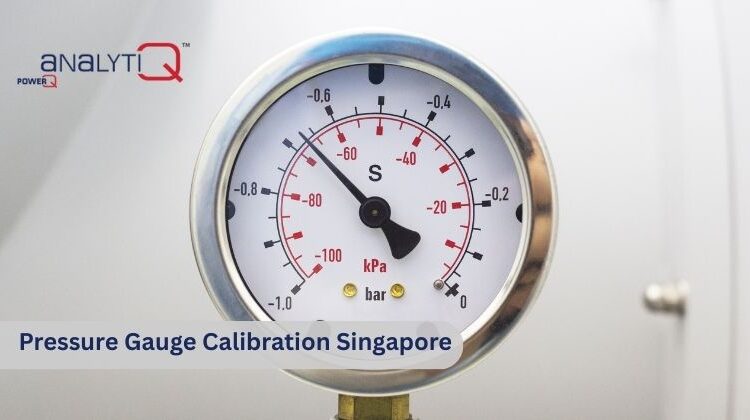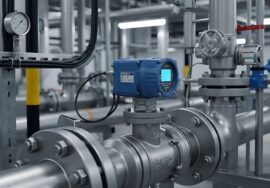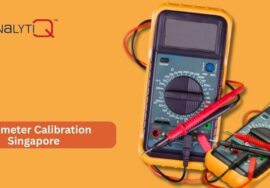
Pressure Gauge Calibration Singapore: Accuracy, Safety, and Compliance
In modern high-speed industries, such as the oil and gas sector and the pharmaceutical industry, it can be said that pressure measurement is of utmost importance. The slightest error in reading a pressure gauge can lead to safety issues, idle time, and costly errors in the product. That is why pressure gauge calibration Singapore is not only a regulatory measure, but it is a vital component of quality, safety, and efficiency.
Calibration ensures that your pressure gauges give accurate, reliable results by applying them to known standards. Regular calibration keeps people, equipment, and the bottom line of your organization safe, regardless of the industry you are in, whether in manufacturing, marine, or HVAC. In the case of businesses that need to have their instruments calibrated in Singapore, it will all depend on having a trusted partner.
What is Calibration of a Pressure Gauge?
A pressure gauge is a device designed to measure the pressure of gases or liquids within a system. With time, there might be mechanical stress, wear and tear, or environmental factors that make the gauge lose its initial accuracy.
The calibration of the pressure gauge is a process of relating the gauge reading to a known traceable reference standard. This is aimed at providing the gauge with appropriate results at acceptable tolerance ranges.
The general steps taken in calibration include:
- Looking at the gauge to see that it has no leaks or damage.
- The application of known values of pressure with reference instruments.
- Registering and contrasting outcomes at various positions throughout the scale of the gauge.
- Carrying out the appropriate corrections and giving out a calibration certificate.
Companies in Singapore can rely on their gauges to be of excellent accuracy and compliance by adhering to international standards like ISO/IEC 17025.
The importance of Pressure Gauge Calibration Singapore
Singapore is a world center of industries in which there is no compromise when it comes to precision. Pressure measuring devices are essential in pharmaceutical labs that are kept in a sterile environment and refineries that need a safe and secure pipeline operation. Calibration of pressure gauges is important to Singapore because:
- Safety: Avoid accidents that are a result of over-pressure or under-pressure.
- Regulatory Compliance: Adhere to local and international standards, and avoid legal or financial fines.
- Operational Efficiency: Reduce the downtime due to faulty instruments.
- Cost Savings: Prolong equipment life, avoid wastage of energy.
- Quality of products: Have proper procedures in sensitive areas such as food and pharma.
It is not only a good practice but also an essential aspect of the quality-oriented industrial culture of Singapore. Calibration certificates also needed to be documented in many industries in Singapore to demonstrate compliance during audits.
The Calibration Process of the Pressure Gauge
The normal procedure of a calibration in a certified laboratory in Singapore includes:
- Inspection: Checking gauge state, mechanical integrity, and zero checking.
- Reference Setup: The gauge may be connected to a master calibrator or deadweight tester, which is more accurately determined.
- Measurement: The incremental pressures are applied throughout the range of the gauge.
- Comparison: Comparison of the deviation between the gauge and the reference standard.
- Adjustment and Certification: To adjust the reading where and when necessary and to issue a traceable certificate of calibration.
This is done to make sure that there is traceability and certainty of measurements and the ISO/IEC 17025 accredited calibration standards in Singapore.
What is the frequency of Calibration of Pressure Gauges?
The calibration is measured by the frequency of the gauge. Industry Recommendation on Frequency of Calibration.
| Industry | Recommended Interval |
| Drugs | Once in 6 months |
| Oil & Gas | Every 3–6 months |
| Food & Beverage | Every 6–12 months |
| General Manufacturing | Annually |
| Marine / Shipping | Every 6–12 months |
Such factors as severe conditions, high vibration, or important safety functions may reduce calibration times. To ensure high reliability, most businesses in Singapore use on-site calibration to minimize downtime.
Indications that Your Pressure Gauge is Due for Calibration
There are also cases when gauges have obvious indications that they require immediate calibration. Look out for:
- Readings that vary or shift with the time.
- The release of pressure does not cause the pointer to go back to zero.
- Observable wear, corrosion, or physical damage.
- The gauge does not pass a safety inspection.
- Inequality with other comparable instruments.
When you see any of them, it is time to book pressure gauge calibration Singapore so as not to waste a lot of money on downtimes or accidents.
Usual Problems of Uncalibrated Gauges
Failure to pay attention to the calibration may result in:
- Incorrect Readings: Cause of incorrect operational decisions.
- Safety Hazards: The faulty gauges can fail to alert to the threatening over-pressure.
- Problems with quality: Unstable production results, particularly in sensitive sectors.
- Down Time and Costs: Damage to equipment or shutdown caused by unreliable gauges.
The frequency of industrial calibration services can remove such risks and assist businesses in operating smoothly.
A checklist to ensure a quick calibration
The following is a checklist that you can use to maintain your instruments in order:
- A list of items that must be checked to guarantee a rapid calibration.
- Check the calibration date or sticker.
- Certificate of accuracy of the check gauges.
- Check to see whether there is a leak, rust, or damage.
- Confirm ISO/IEC 17025 compliance.
- Have a set of timely recalibrations by an accredited laboratory.
After such a regularity, your pressure gauges are good and conforming.
The reasons to use PowerQ AnalytiQ to Calibrate Pressure Gauges Singapore
In critical calibration, selecting the service provider is crucial. PowerQ AnalytiQ has established a brand name as a reliable instrument calibration service provider within Singapore.
That is why clients want PowerQ AnalytiQ:
- Assurance of international calibration under ISO/IEC 17025 Accredited Laboratory.
- Skilled and Experienced Technical team: Experienced professionals.
- Complete Service: In addition to pressure gauges, PowerQ AnalytiQ provides a calibration of temperature, flow, and electrical equipment, among others.
- On-Site and In-Labs: Customized to your operation requirements.
- Traceable Reports: Calibration certificates comply with industry standards and regulations.
- Short Service Time: Efficient service to minimize downtimes.
- Customer-Centric Support: A special team of reliability and satisfaction.
When you decide to use PowerQ AnalytiQ to calibrate the pressure gauges in Singapore, you will have acquired a company that believes in accuracy, safety, and efficiency.
Frequently Asked Questions (FAQ)
Q1. What is the time of pressure gauge calibration in Singapore?
Ans: The calibration is a process that normally lasts 2 to 5 working days, depending on the type of gauge and the volume.
Q2. Is it possible to do the calibration on-site?
Ans: Yes. To reduce the inconveniences, PowerQ AnalytiQ offers easy on-site calibration solutions in Singapore.
Q3. What makes me know that my gauge has to be calibrated?
Ans: If there are changes in readings, a drift in the readings, or failure of safety checks, then schedule calibration immediately.
Q4. What standards are followed?
Ans: All calibrations are done under ISO/IEC 17025 and ISO 9001, which are traceable and internationally acceptable.
Conclusion
Largely because precision is a key factor in industries, periodic pressure gauge calibration Singapore upholds the accuracy, safety, and compliance. When you invest in calibration, you save your workforce, enhance efficiency, and comply with industry requirements. PowerQ AnalytiQ is not just another calibration provider, but a partner that you can be confident of to uphold the highest level of quality standards.




